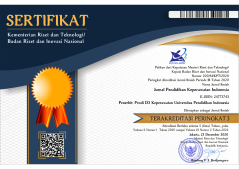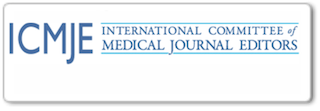Analyzing Posyandu Cadres' Motivation in Combating Stunting through the Lens of Maslow's Hierarchy of Needs
Abstract
Stunting, a common child malnutrition form, hampers growth due to poor nutrition, infections, and limited psychosocial stimulation. Primarily affecting those under five, especially in the first 1,000 days, it becomes nearly irreversible later. Linked to impaired brain development, childhood morbidity, and mortality, it heightens the risk of chronic diseases in adulthood, impacting cognitive function and productivity. This research aims to analyze factors related to the motivation of Posyandu cadres in tackling stunting in the Belu Regency, RI-RDTL border. The method used in this research is mixed methods. The mixed method research strategy applied is the Concurrent Embedded method. The quantitative method used is a descriptive approach while the qualitative method uses a case study. The study was conducted at Haliwen Health Center and South Atambua Health Center, with a quantitative research sample of 150 people and 10 qualitative research informants. The research findings indicate that the dominant cadre motivation factors include Social Needs at 99.3%. Based on Maslow's Basic Human Needs motivation factors, when viewed from the results of quantitative and qualitative data analysis, the motivation of cadres in handling stunting is social needs. Meanwhile, in qualitative research, a main theme was found, namely Humanitarian Harmony, which was divided into 3 categories, namely Volunteering, Dedication, and Caring. Volunteering, Dedication, and Caring are included in social needs. Humans in general need to interact and contribute to society. Dedication, caring, and volunteering are ways to fulfill this social need by providing support or assistance to others without expecting immediate reward.
Keywords
Full Text:
PDFReferences
Adnyaswari, N. A., & Adnyani, I. G. A. D. (2017). Pengaruh Dukungan Sosial dan Burnout Terhadap Kinerja Perawat Rawat Inap RSUP Sanglah. E-Jurnal Manajemen Unud, 6(5), 2474–2500.
Afifa, I. (2019). Kinerja Kader dalam Pencegahan Stunting: Peran Lama Kerja sebagai Kader, Pengetahuan dan Motivasi. Jurnal Kedokteran Brawijaya, 30(4), 336.
Akseer, N., Tasic, H., Nnachebe Onah, M., Wigle, J., Rajakumar, R., Sanchez-Hernandez, D., Akuoku, J., Black, R. E., Horta, B. L., Nwuneli, N., Shine, R., Wazny, K., Japra, N., Shekar, M., & Hoddinott, J. (2022). Economic costs of childhood stunting to the private sector in low- and middle-income countries. EClinicalMedicine, 45, 101320.
Astuti, A. B., Mulyanti, S., & Diyono. (2021). The effectiveness of the interprofessional collaboration (IPC) program on the attitude of mothers and health cadres on stunting at puskesmas karanganom Klaten Central Java Republic of Indonesia. Electronic Journal of General Medicine, 18(6).
Black, R. E., Victora, C. G., Walker, S. P., Bhutta, Z. A., Christian, P., De Onis, M., Ezzati, M., Grantham-Mcgregor, S., Katz, J., Martorell, R., & Uauy, R. (2013). Maternal and child undernutrition and overweight in low-income and middle-income countries. The Lancet, 382(9890), 427–451.
Brahima, J. J., Noor, N. N., & Jafar, N. (2020). Immunization and distance relationship status on the birth events 1000 HPK stunting work in bone health district Barebbo. Enfermería Clínica, 30, 318–322.
Clary, E. G., Snyder, M., Ridge, R. D., Copeland, J., Stukas, A. A., Haugen, J., & Miene, P. (1998). Understanding and assessing the motivations of volunteers: a functional approach. Journal of Personality and Social Psychology, 74(6), 1516–1530.
Danoff, A., & Kopel, S. (1994). What are the motivational needs behind volunteer work? The Journal of Volunteer Administration, 12(4), 13–18.
de Onis, M., & Branca, F. (2016). Childhood stunting: A global perspective. Maternal and Child Nutrition, 12, 12–26.
Evans, T., Akporuno, O., Owens, K. M., Lickers, B., Marlinga, J., Lin, H. C., & Loh, L. C. (2017). Using Maslow’s hierarchy to highlight power imbalances between visiting health professional student volunteers and the host community: An applied qualitative study. Education for Health (Abingdon, England), 30(2), 133–139.
Forson, J. A., Ofosu-Dwamena, E., Opoku, R. A., & Adjavon, S. E. (2021). Employee motivation and job performance: a study of basic school teachers in Ghana. Future Business Journal, 7(1), 1–12.
Gansaonré, R. J., Moore, L., Bleau, L. P., Kobiané, J. F., & Haddad, S. (2022). Stunting, age at school entry and academic performance in developing countries: A systematic review and meta-analysis. Acta Paediatrica, International Journal of Paediatrics, 111(10), 1853–1861.
Georgiadis, A., & Penny, M. E. (2017). Child undernutrition: opportunities beyond the first 1000 days. The Lancet Public Health, 2(9), e399.
Islam, M. S., Zafar Ullah, A. N., Mainali, S., Imam, M. A., & Hasan, M. I. (2020). Determinants of stunting during the first 1,000 days of life in Bangladesh: A review. Food Science and Nutrition, 8(9), 4685–4695.
Janus, E., & Misiorek, A. (2019). Why do People Help Each Other? Motivations of Volunteers Who Assisted Persons with Disabilities During World Youth Day. Journal of Religion and Health, 58(3), 1003–1010.
Kably, A. A., Almalki, R. A., AlQarni, A. M., & Bardisi, W. M. (2021). Level of participation in public health volunteering and its determinants among ministry of health primary health care workers in Jeddah 2019. Journal of Family Medicine and Primary Care, 10(10), 3584–3589.
Kumar, S., Bothra, V., & Mairembam, D. (2016). A dedicated public health cadre: Urgent and critical to improve health in India. Indian Journal of Community Medicine, 41(4), 253–255.
Lewa, A. F., Kusika, S. Y., Muliani, Rahmawati, & Jannah, I. (2020). Risk factors of stunting events in child 6–23 months old in Biromaru Public Health Center Sigi. Enfermería Clínica, 30, 131–135.
Marni, Abdullah, A. Z., Thaha, R. M., Hidayanty, H., Sirajuddin, S., & Syafar, M. (2021). Risk factor and interventions of behavioral changing strategy in acceleration of stunting prevention: A systematic review. Enfermería Clínica, 31, S636–S639.
Martin, S. L., Matare, C. R., Kayanda, R. A., Owoputi, I., Kazoba, A., Bezner Kerr, R., Nnally, L., Khan, M., Locklear, K. H., Dearden, K. A., & Dickin, K. L. (2021). Engaging fathers to improve complementary feeding is acceptable and feasible in the Lake Zone, Tanzania. Maternal and Child Nutrition, 17(S1), 1–14.
Mediani, H. S., Hendrawati, S., Pahria, T., Mediawati, A. S., & Suryani, M. (2022). Factors Affecting the Knowledge and Motivation of Health Cadres in Stunting Prevention Among Children in Indonesia. Journal of Multidisciplinary Healthcare, 15, 1069–1082.
Miranti, Mutiarasari, D., Arsin, A. A., Hadju, V., Mallongi, A., Nur, R., Amri, I., Haruni, H., Wahyuni, R. D., Rahma, & Faris, A. (2020). Determinants of the incidence of stunting in the working area of Kinovaro Sigi Health Center. Enfermería Clínica, 30, 246–252.
Montenegro, C. R., Gomez, G., Hincapie, O., Dvoretskiy, S., DeWitt, T., Gracia, D., & Misas, J. D. (2022). The pediatric global burden of stunting: Focus on Latin America. Lifestyle Medicine, 3(3), 1–11.
Muiz, F. A., Mulia Z, F., & Sunarya, E. (2022). Pengaruh Dukungan Sosial dan Kemampuan Karyawan Terhadap Kinerja Karyawan ( studi empiris pada PT.BRIS POEY TRANS ). Journal of Economic, Bussines and Accounting (COSTING), 6(1), 272–280.
Muldiasman, M., Kusharisupeni, K., Laksminingsih, E., & Besral, B. (2018). Can early initiation to breastfeeding prevent stunting in 6–59 months old children? Journal of Health Research, 32(5), 334–341.
Nasution, H. wardah. (2022). Coorrelation Of Nutritional Status In Toddlers With The Stunting Incident At The Panyabungan Jae Puskesmas, Panyabungan City District Mandailing Regency Year 2022. Science Midwifery, 10(3), 2063–2069.
Nurpina, S. (2016). Pengaruh Penghargaan (Reward) Dan Motivasi Berprestasi Terhadap Prestasi Kerja Guru Sma Negeri Di Kabupaten Sukabumi. Jurnal Manajemen Pendidikan, 7(2), 1337–1345.
Ogutu, E. A., Ellis, A., Rodriguez, K. C., Caruso, B. A., McClintic, E. E., Ventura, S. G., Arriola, K. R. J., Kowalski, A. J., Linabarger, M., Wodnik, B. K., Webb-Girard, A., Muga, R., & Freeman, M. C. (2022). Determinants of food preparation and hygiene practices among caregivers of children under two in Western Kenya: a formative research study. BMC Public Health, 22(1), 1–19.
Prytz, E., Norrblom, P., Pilemalm, S., Andersson Granberg, T., & Jonson, C. O. (2023). What motivates and demotivates emergency response volunteers? A survey-based factor analysis study. Scandinavian Journal of Trauma, Resuscitation and Emergency Medicine, 31(1), 1–8.
Same, A., McBride, H., Liddelow, C., Mullan, B., & Harris, C. (2020). Motivations for volunteering time with older adults: A qualitative study. PLoS ONE, 15(5), 1–13.
Sari, E., & Dwiarti, R. (2018). Pendekatan Hierarki Abraham Maslow Pada Prestasi Kerja Karyawan Pt. Madubaru (Pg Madukismo) Yogyakarta Abraham Maslow’S Hierarchical Approach To Employee Performance of Madubaru Limited Company (Pg Madukismo) Yogyakarta. Februari.421 JPSB, 6(1), 58–77.
Schott, C., Neumann, O., Baertschi, M., & Ritz, A. (2019). Public Service Motivation, Prosocial Motivation and Altruism: Towards Disentanglement and Conceptual Clarity. International Journal of Public Administration, 42(14), 1200–1211.
Sengkey, S. W., & Pangemanan, G. D. K. J. M. (2015). Analisis Kinerja Kader Posyandu di Puskesmas Paniki Kota Manado Performance Analysis of Cadres Posyandu in Puskesmas Paniki Manado. Jikmu, 5(2b), 491–502.
Stewart, C. P., Iannotti, L., Dewey, K. G., Michaelsen, K. F., & Onyango, A. W. (2013). Contextualising complementary feeding in a broader framework for stunting prevention. Maternal and Child Nutrition, 9(S2), 27–45.
Sukamto, I. S., Hartono, H., Setyowati, R., Mulyani, S., Nintya, D., Sarah , H., Hanifah , H. F., & Maulina, R. (2022). The Perspective of Community Health Center Workers toward Stunting Prevention Program during the COVID-19 Pandemic. Open Access Macedonian Journal of Medical Sciences, 10(T8), 149–154.
Sukamto, I. S., Hartono, Setyowati, R., & Mulyani, S. (2021). Community health center worker perspectives on stunting risk factors and challenge of stunting prevention program: A qualitative study. Teikyo Medical Journal, 44(5), 1769–1779.
Susilawati, N. M. ., & Mayasari, N. M. D. . (2022). Pengaruh Lingkungan Kerja Dan Motivasi Terhadap Kinerja Karyawan Di Pt.Fif Pos Negara . Bisma: Jurnal Manajemen, 8(1), 108–117.
Syahputra, M., Syafar, M., … R. S.-J. of P., & 2022, undefined. (2022). Analysis Of Positive Deviance Approach To Stunting Events In Kaili Tribe Toddlers In Donggala Regency, Province Central Sulawesi. Journalppw.Com, 2022(6), 9486–9502.
Syauta, B. A., & Yuniasanti, R. (2017). Hubungan Antara Kebutuhan Aktualisasi Diri Dengan Motivasi Kerja Pada Wanita Karier Di Pt Kusuma Sandang Mekarjaya. Insight: Jurnal Ilmiah Psikologi, 17(1), 49.
Tahangnacca, M., Amiruddin, R., Ansariadi, & Syam, A. (2020). Model of stunting determinants: A systematic review. Enfermería Clínica, 30, 241–245.
UNICEF, WHO, & WBO. (2020). Levels & Trends in Child Mortality Report 2020. In UN Inter-agency Group for Child Mortality Estimation (UN-Igme). https://www.unicef.org/media/79371/file/UN-IGME-child-mortality-report-2020.pdf.pdf
UNICEF, WHO, & WorldBank. (2018). Prevalence of stunting, height for age (% of children under 5) - Indonesia. 1–18.
Vo, T. T. D., Tuliao, K. V., & Chen, C. W. (2022). Work Motivation: The Roles of Individual Needs and Social Conditions. Behavioral Sciences, 12(2).
DOI: https://doi.org/10.17509/jpki.v9i2.64226
Refbacks
- There are currently no refbacks.
Jurnal Pendidikan Keperawatan Indonesia(JPKI) published by Indonesia University of Education. JPKI is licensed under a Creative Commons Attribution-ShareAlike 4.0 International License.
Office :
Nursing Department. FPOK UPI.
229, Dr. Setiabudhi Street. Bandung 40154
West Java , Indonesia
E-mail : jpki@upi.edu

_.png)
_.png)
_.png)











